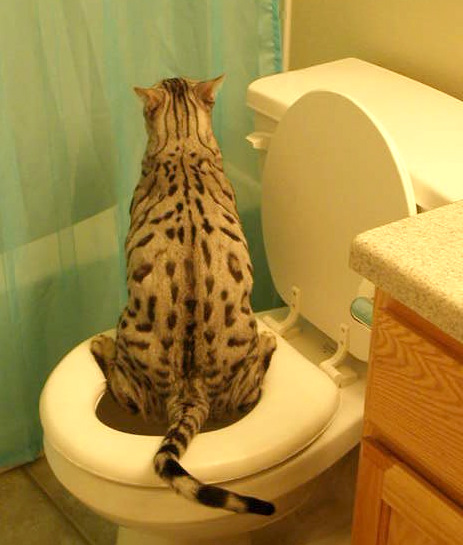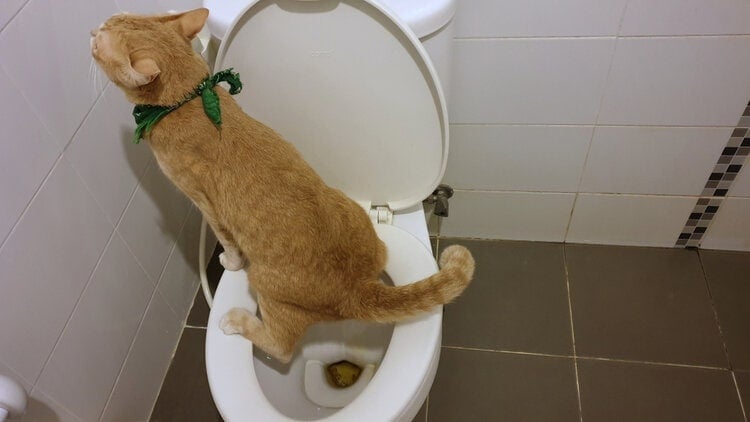What're your ideas regarding Why you should never flush dog poop down the toilet?

When it involves disposing of waste, particularly animal waste, lots of people typically resort to the convenient alternative of flushing it down the toilet. Nevertheless, this seemingly very easy service can have severe effects for the atmosphere and public health. In this short article, we'll discover why flushing pet waste down the toilet is a poor idea and offer alternate techniques for correct disposal.
Intro
Proper garbage disposal is vital for keeping ecological sustainability and public health. While it might appear safe to flush animal waste down the commode, it can bring about different concerns, both for the setting and human health.
Risks of flushing pet waste
Ecological effect
Flushing animal waste introduces harmful microorganisms and pathogens into waterways, which can negatively impact water ecosystems. These microorganisms can contaminate water resources and injury aquatic life, disrupting fragile communities.
Public health worries
Animal waste has unsafe germs such as E. coli and Salmonella, which can posture serious wellness risks to human beings. Flushing animal waste down the bathroom can infect water materials, causing the spread of illness and infections.
Alternatives to flushing
Rather than flushing animal waste down the commode, there are a number of different disposal techniques that are a lot more environmentally friendly and hygienic.
Composting
Composting pet waste is an eco-friendly means to get rid of it. By composting, organic matter is broken down into nutrient-rich dirt, which can be used to feed yards and plants.
Landfill disposal
Dealing with animal waste in a landfill is an additional alternative. While not as eco-friendly as composting, it is a safer choice to flushing, as it prevents the contamination of water sources.
Pet dog garbage disposal systems
There are specific pet dog garbage disposal systems readily available that securely and hygienically deal with animal waste. These systems usually use enzymes to break down waste and get rid of odors.
Steps to proper animal waste disposal
To make certain proper disposal of pet waste, follow these actions:
Scooping and getting waste
Consistently scoop and bag pet waste using eco-friendly bags. This protects against waste from infecting the setting.
Making use of assigned waste containers
Dispose of bagged animal waste in designated waste containers, such as compost bins or landfill bins. Avoid flushing it down the toilet in any way expenses.
Cleaning up can and family pet locations regularly
Regularly clean can and family pet locations to stop the accumulation of waste and bacteria. Use pet-safe cleansing products to preserve hygiene.
Benefits of correct disposal approaches
Adopting proper disposal approaches for animal waste uses a number of advantages:
Minimized environmental pollution
Proper disposal methods decrease the threat of environmental pollution, shielding rivers and communities from contamination
Reduced risk of water contamination.
By staying clear of flushing pet waste down the commode, the risk of water contamination is dramatically lowered, securing public health.
Enhanced hygiene and health
Proper disposal approaches advertise much better hygiene and hygiene, producing a safer setting for both people and animals.
Conclusion
Finally, flushing animal waste down the bathroom is unsafe to the atmosphere and public health. By adopting alternate disposal techniques and complying with correct waste management techniques, we can decrease the negative influence of pet waste and contribute to a cleaner, healthier earth.
What To Do With Dog Poo – The Do's And Don'ts Of Disposing Of Faeces
Dog poo bins
Some councils provide dedicated dog waste bins in popular dog-walking areas that can take dog poo that has been bagged but you can legally dispose of dog waste in any public litter bin, as long as it is securely bagged. This also applies to your wheelie bin at home.
Do not flush
Water companies do not recommend flushing dog faeces down the toilet because certain parasites can survive the water processing treatment and are potentially harmful to humans. You should also never consider flushing dog poo that has been bagged down the toilet as the bags will not break down and instead create severe blockages in the sewage system.
In the woods
The Forestry Commission promotes a ‘stick and flick’ method for dealing with waste in the woods. This means finding a stick and using it to flick any poo from off the path so that it is out of the way of other walkers. You could also bury it as long as it is not in an area where there might be livestock.
Livestock
Parasites found in dog poo can be transmitted to livestock if they inadvertently eat infected faeces that has been left on grazing land. This could result in the death of sheep or abortion in cattle so you should always make sure you pick up your dog’s waste in fields where livestock could be present.

Regularly clean can and family pet locations to stop the accumulation of waste and bacteria. Use pet-safe cleansing products to preserve hygiene.
Benefits of correct disposal approaches
Adopting proper disposal approaches for animal waste uses a number of advantages:
Minimized environmental pollution
Proper disposal methods decrease the threat of environmental pollution, shielding rivers and communities from contamination
Reduced risk of water contamination.
By staying clear of flushing pet waste down the commode, the risk of water contamination is dramatically lowered, securing public health.
Enhanced hygiene and health
Proper disposal approaches advertise much better hygiene and hygiene, producing a safer setting for both people and animals.
Conclusion
Finally, flushing animal waste down the bathroom is unsafe to the atmosphere and public health. By adopting alternate disposal techniques and complying with correct waste management techniques, we can decrease the negative influence of pet waste and contribute to a cleaner, healthier earth.
What To Do With Dog Poo – The Do's And Don'ts Of Disposing Of Faeces
Dog poo bins
Some councils provide dedicated dog waste bins in popular dog-walking areas that can take dog poo that has been bagged but you can legally dispose of dog waste in any public litter bin, as long as it is securely bagged. This also applies to your wheelie bin at home.
Do not flush
Water companies do not recommend flushing dog faeces down the toilet because certain parasites can survive the water processing treatment and are potentially harmful to humans. You should also never consider flushing dog poo that has been bagged down the toilet as the bags will not break down and instead create severe blockages in the sewage system.
In the woods
The Forestry Commission promotes a ‘stick and flick’ method for dealing with waste in the woods. This means finding a stick and using it to flick any poo from off the path so that it is out of the way of other walkers. You could also bury it as long as it is not in an area where there might be livestock.
Livestock
Parasites found in dog poo can be transmitted to livestock if they inadvertently eat infected faeces that has been left on grazing land. This could result in the death of sheep or abortion in cattle so you should always make sure you pick up your dog’s waste in fields where livestock could be present.

I recently found that post on Should you flush animal waste down the toilet when doing a search on the search engines. Sharing is nice. Helping people is fun. We take joy in your readership.
Start Now